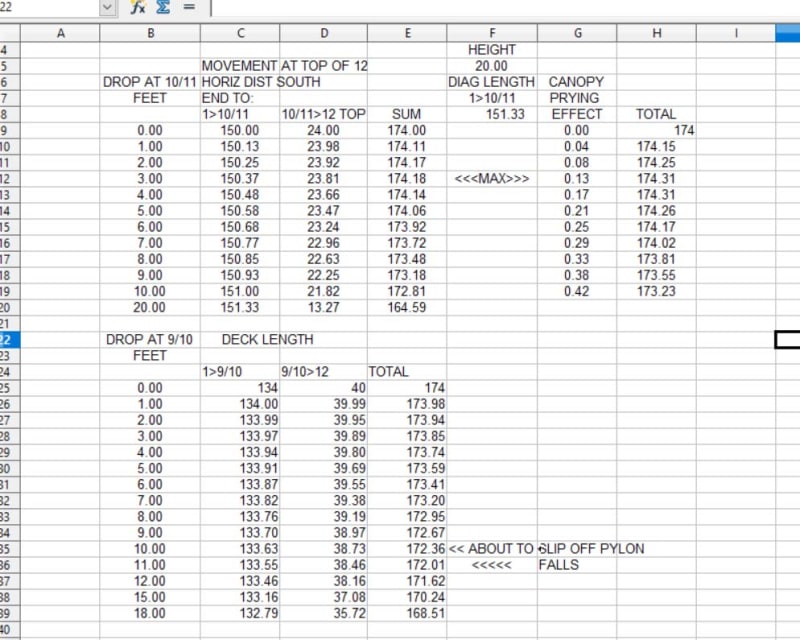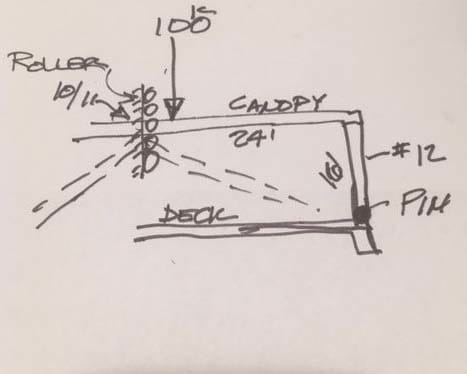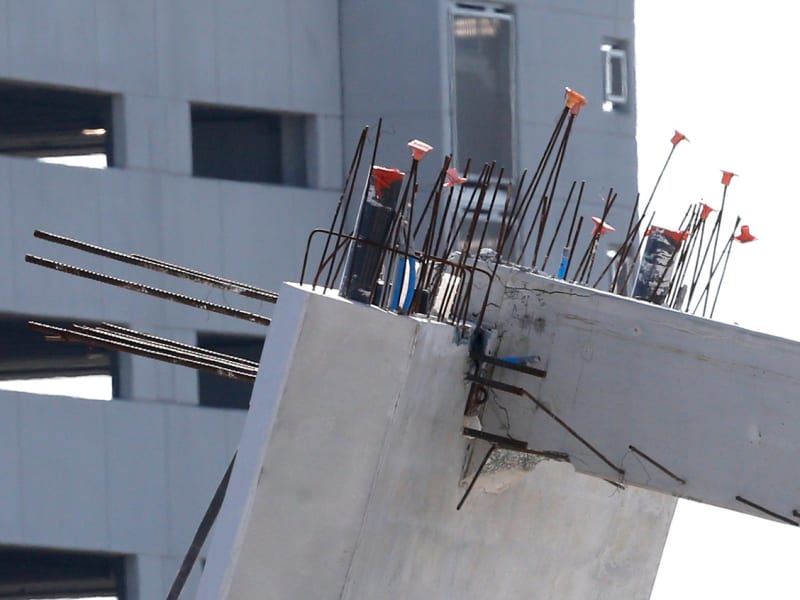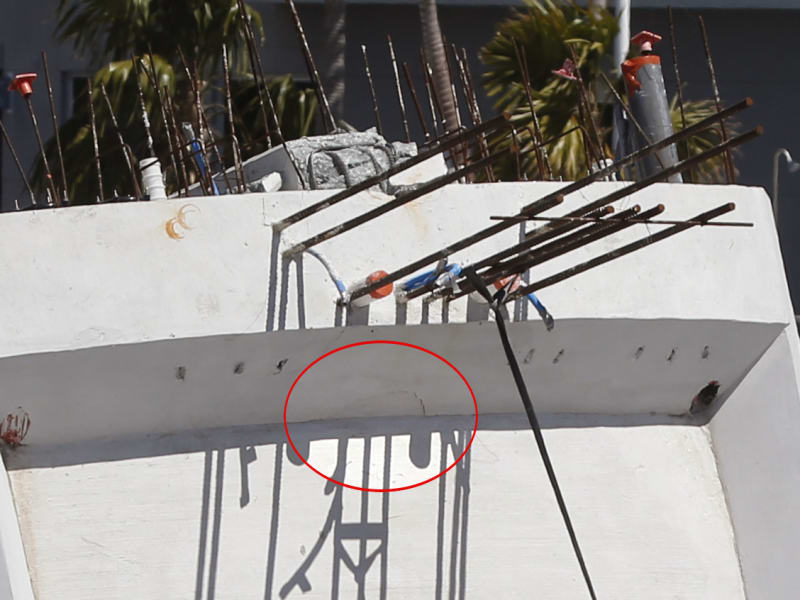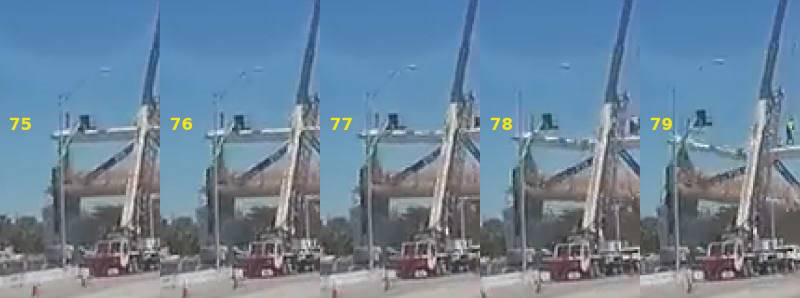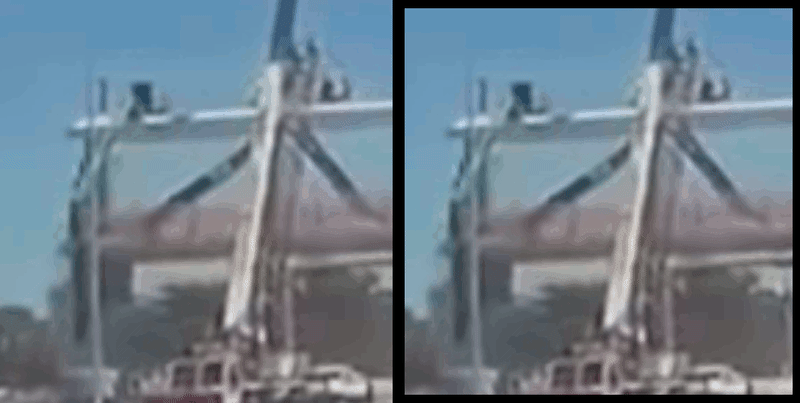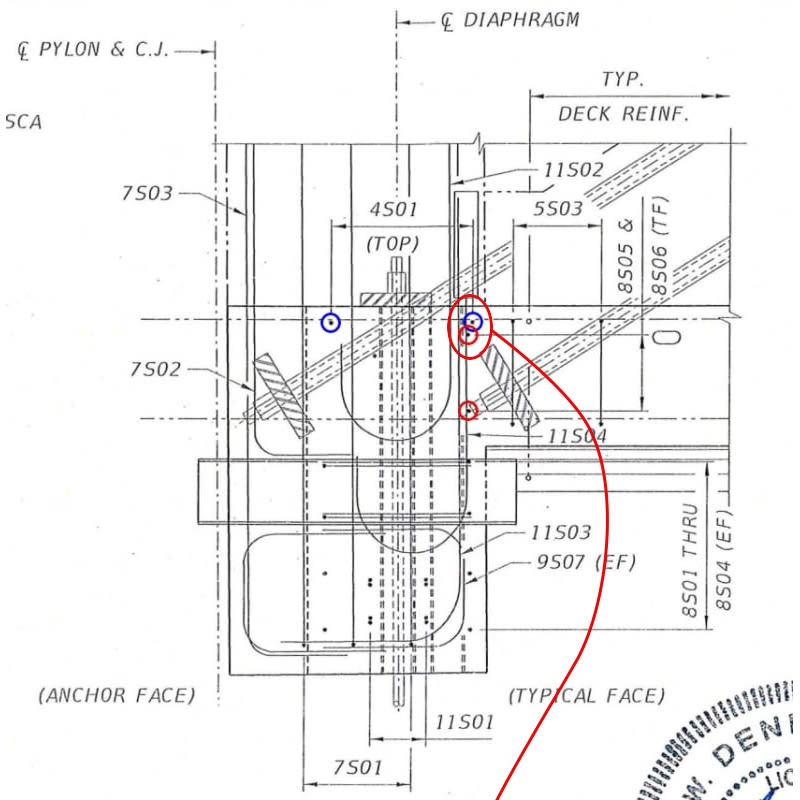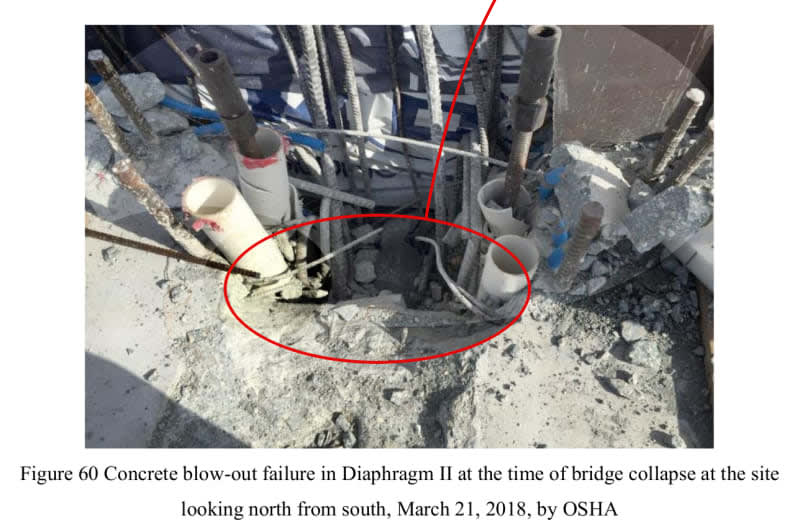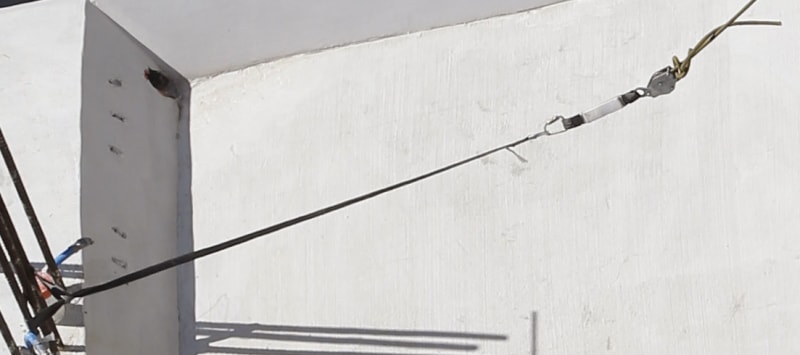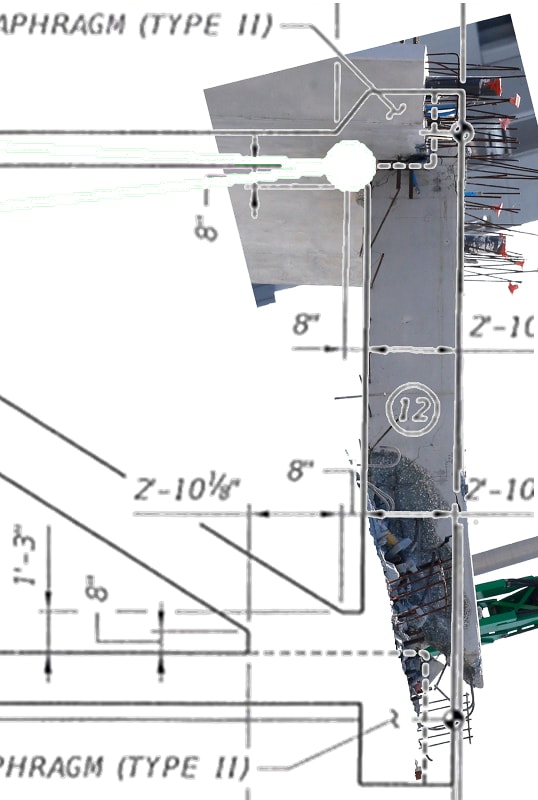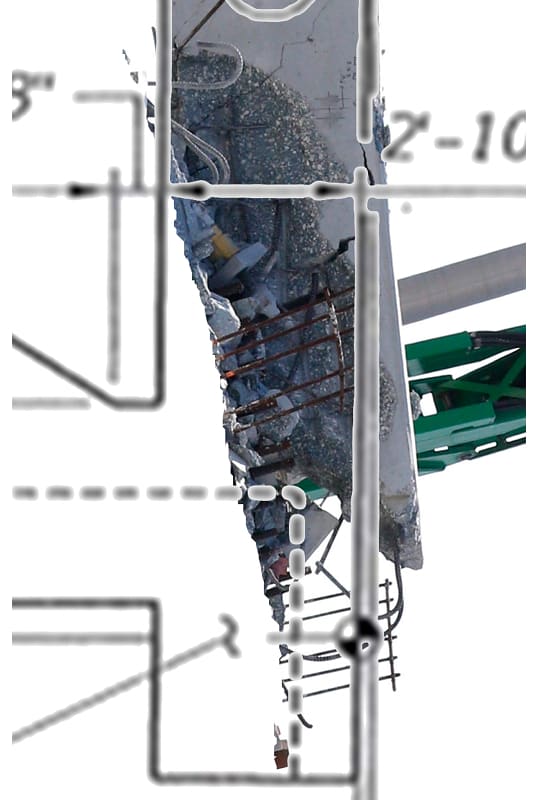When did 12 depart its perch on the deck?
I would like to see comments by all as to amount of damage visible to the north section of the canopy at member 12 and damage to the remaining upper section of member 12. Perhaps good zoomed images - I cannot find severe cracking of the canopy or member 12 at the joint with the canopy.
The canopy is a pretty stiff element. I am guessing maybe 1.5 to 2.5 times a flat section. If anyone has AutoCad and can draw it I think AC can return the section properties - I, S, A, CG, etc. Did a bit of math on a 16 foot segment of a 24.5 ft radius 12” thick, ignoring the oblique orientation of the 1' X 1' segments I think the NA is about 24.153 ft above the Layout Pt, or 0.153 above the bottom of the canopy at the center. Rough “I” is 30616 in^4. Add something for the oblique issue and use maybe 32000 in^4.
The column is easy. 21X34^3/12=68782 in^4. We can use those values later.
Some discussion now. If everything remains connected successfully, members 11 and 12 and the canopy form a stable and well braced system, and 11 protects the joint of 12 to the canopy. But what if 11 loses its grip at either end? Or fails somewhere along its length?
Lets explore conditions when 10/11 drops 3 feet and take member 11 out of the picture. How much stress or deformation can the canopy at 12 and 12 at the top withstand?
When node 10/11 drops 3 feet there are three possibilities with regard to joint canopy/12.
1. No damage visible - the joint remained basically at 90 degrees, and its base departed the top of the deck and moved 2 feet north. 16'/24' X 3' = 2 feet.
2. Complete failure of joint canopy/12, - bottom of 12 could have remained in position on deck. I do not see this as the result when looking at joint canopy/12.
3. Something in between - then some damage would be visible. How much?
To find the possible load conditions at the joint of 12 to the canopy, the canopy is isolated at 10/11 and member 12 is pinned at the base at the top of the deck. The pin simplifies the analysis and allows rotation but prevents lateral movement to the north, simulating a condition in which 12 remained connected to the deck. The canopy is isolated at 10/11 and allowed to move vertically without moving to the south. This is not an acual condition but it allows the approximation of moment capacities and stresses in the relatively undamaged joint of the column 12 to the canopy.
So lets load this 2 member bent with 100 kips at the free end at 10/11. The deflection is about: Delta=PL^2(L+C)/(3EI). L+C is about 24+5 (5 being the equivalent length of canopy section to be same stiffness as the 16 foot column ).
Defl=100K*24^2*29*1728/(3*6x10^6*32000) = 5.01 inches. Pretty stiff.
The moment in the deck and column top is 100K*24'=2400 ft-kips.
Canopy stress is 2400*12*(10.156)/32000=8.14 ksi. That is about failure, but we have not included reinforcing.
Column stress is 2400 'K*12*34”/2/68782=7.11 ksi. The column could survive this moment.
But that is at a deflection of only 5 inches.
If joint 10/11 dropped 3 feet, the stresses on the canopy and column would be much greater. Like 35”/5”=7 times greater. Or in the order of 56 ksi in the canopy and 49 ksi in the column. That is failure levels, and did not happen. We can tell that by observing the canopy and column area of the collapsed structure.
So the column could not have been on top of the deck when joint 10/11 dropped 3 feet. From the dimension results, reading 3 feet drop in joint 9/10, the deck has moved south only 0.15 feet or about 2 inches.
These results are linear, assuming everything remains elastic. So even at the point when 10/11 dropped one foot, the results are 2.4 times the 5” result and stresses, making failure of the canopy/12 joint a certainty - if 12 remained atop the deck.
I suggest 11 and 12 departed the deck as the initial event of this collapse. It must have decoupled from the deck before joint 10/11 dropped a foot or so.
Note - I hope I got the numbers right - I welcome peer review.
EDIT ADD: One more possibility - if member 11 failed by bursting or because of the splits captured in the photos, thereby allowing joint 10/11 to drop 5", the above calc shows the canopy and member 12 could have delivered about 150 kips northbound to the 11/12/deck joint. That additional 150 kips may have triggered or hastened the blow out and collapse. And the retensioning of the PT rods in 11 may have further damaged 11 to the point of failure.

